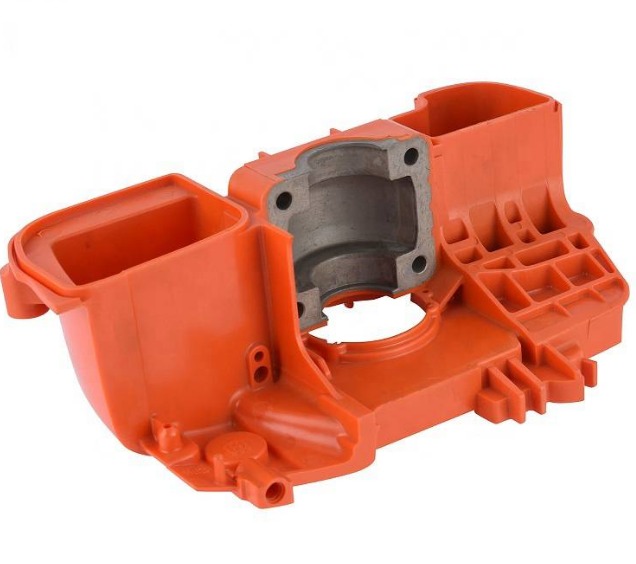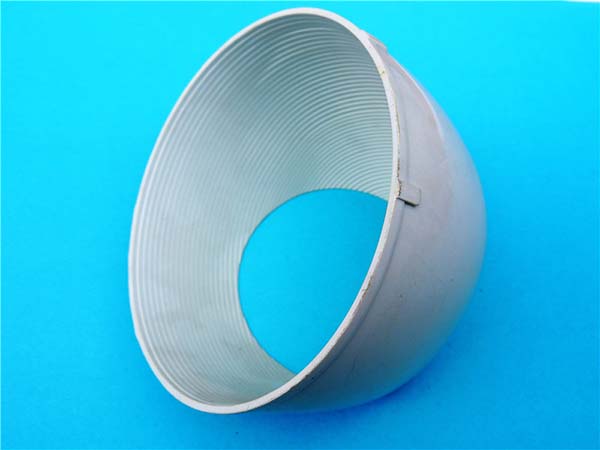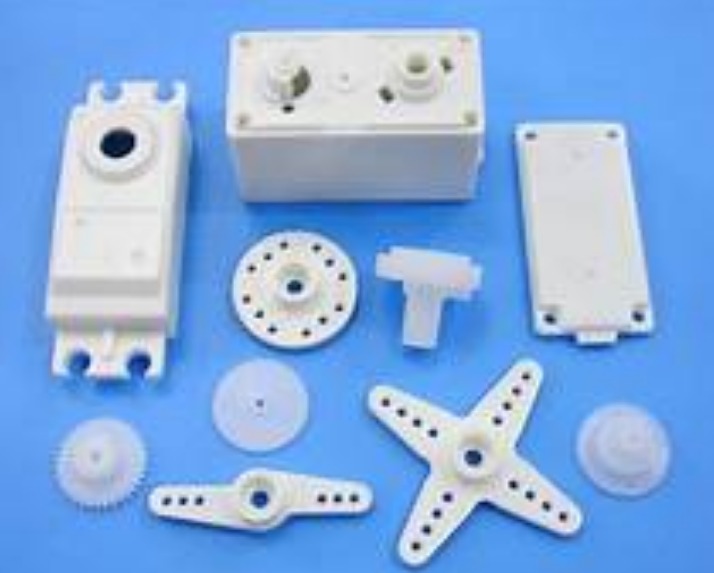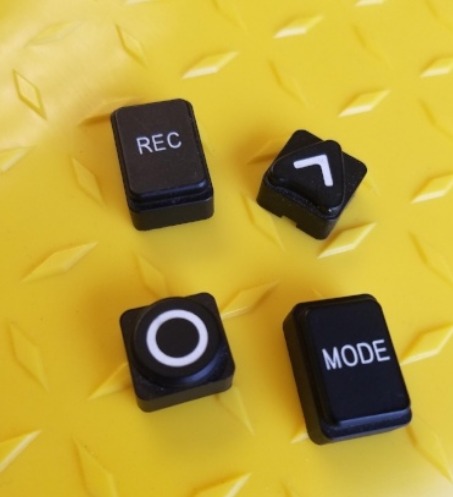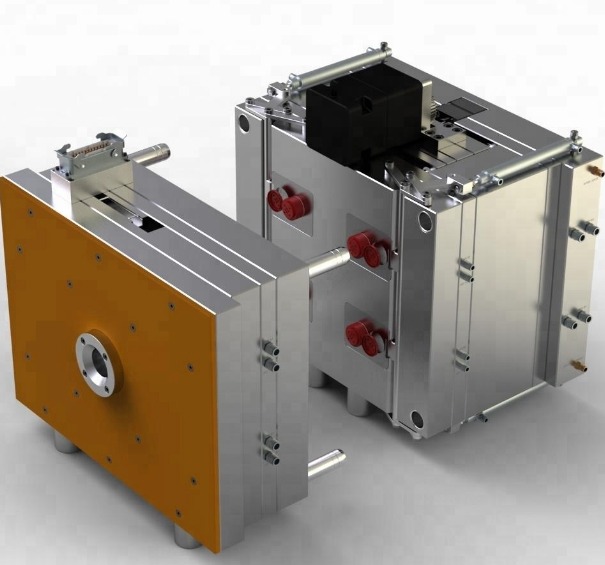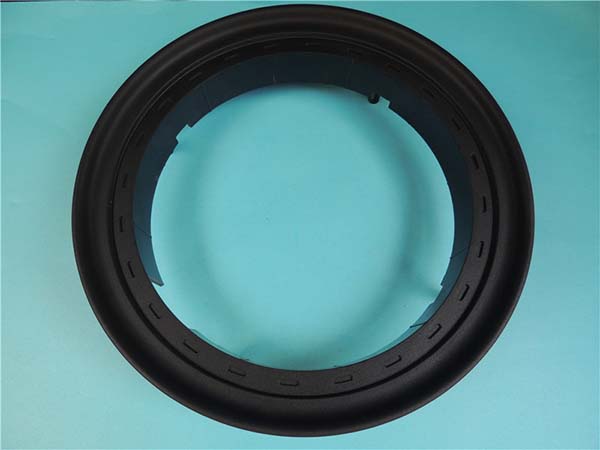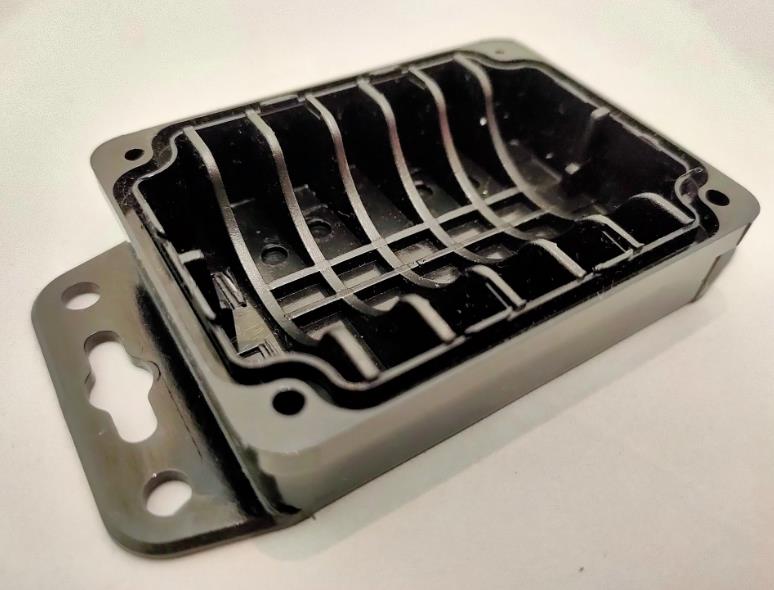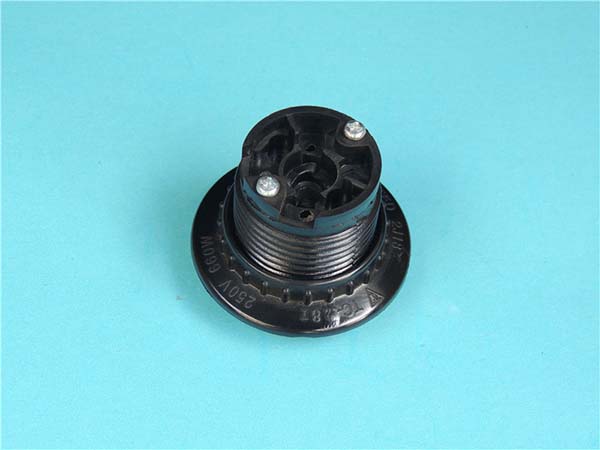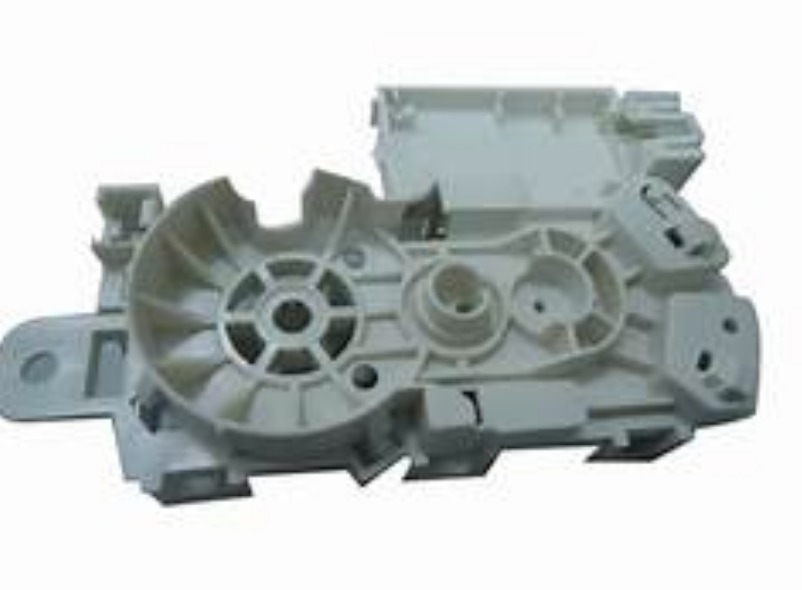Introduction
What is Injection Moulding?
Injection moulding is a widely used manufacturing process for producing plastic parts. It involves the injection of molten plastic material into a pre - fabricated mold cavity. This highly efficient method is the go - to choice for creating a vast array of plastic products, from small, intricate components to large - scale items.
The process begins with the plastic material, which is typically in the form of pellets. These pellets are fed into a heated barrel of an injection molding machine. As the pellets move through the barrel, they are melted by the heat and shearing forces generated by a rotating screw. Once the plastic reaches a fully molten and homogeneous state, it is ready for the next step.
The molten plastic is then forced, or "injected," under high pressure into a closed mold. The mold is designed to have a cavity that is an exact negative of the desired final product. This could be anything from a simple toy part to a complex automotive interior component. Once the mold cavity is filled with the molten plastic, it is held under pressure for a short period to ensure that the plastic fills every detail of the mold and takes on its precise shape.
After the plastic has been given sufficient time to cool and solidify within the mold, the mold opens, and the now - formed plastic part is ejected. This part may then undergo additional post - processing steps, such as trimming excess material (known as flash), sanding, or painting, depending on the requirements of the final product. Injection moulding is a continuous and highly automated process, which allows for high - volume production with consistent quality.
High - Efficiency Production
Rapid Cycle Times
One of the most significant advantages of injection moulding is its extremely rapid cycle times. The process is highly automated, which greatly reduces the time spent on manual operations. Modern injection molding machines are equipped with advanced control systems that can precisely regulate every stage of the process, from the injection of the molten plastic to the ejection of the finished part.
The injection stage, where the molten plastic is forced into the mold cavity, is typically very quick. High - pressure pumps are used to inject the plastic at a high velocity, allowing the mold to be filled in a matter of seconds. For example, in the production of small plastic components like buttons or small connectors, the injection time can be as short as 1 - 2 seconds.
After injection, the cooling stage is also optimized for speed. Efficient cooling systems, such as water - cooled channels integrated into the mold, help to rapidly solidify the plastic. The time required for cooling depends on the thickness and material of the part, but it is generally much shorter compared to other molding methods. For a thin - walled plastic part made of common materials like polyethylene (PE) or polypropylene (PP), the cooling time might be around 10 - 20 seconds.
In contrast, other molding methods like compression molding often have much longer cycle times. In compression molding, the material is placed in a heated mold, and pressure is applied to shape the material. This process typically involves a longer heating and curing time, and the overall cycle time can be several minutes. For instance, a compression - molded rubber part might have a cycle time of 2 - 5 minutes, which is significantly longer than the cycle time of an injection - molded plastic part of a similar size and complexity.
High - Volume Output
Injection moulding is ideally suited for high - volume production. Its high - speed cycle times, combined with the ability to produce multiple parts in a single mold (multi - cavity molds), make it possible to manufacture a large number of products in a relatively short period.
For example, in the automotive industry, many plastic components such as dashboard parts, door handles, and interior trim pieces are produced using injection moulding. A single injection molding machine with a multi - cavity mold can produce hundreds or even thousands of these parts per hour. A large - scale automotive manufacturing plant might have dozens of injection molding machines running continuously, enabling the production of thousands of car interior components every day.
The electronics industry also heavily relies on injection moulding for the production of product housings. Take mobile phone cases as an example. With the high demand for smartphones globally, manufacturers use injection moulding to produce large quantities of cases. A well - optimized injection molding production line can produce thousands of phone cases per day, meeting the market's insatiable appetite for these products.
This high - volume production capability not only meets the large - scale demand of various industries but also helps to reduce the unit cost of production. As the number of parts produced increases, the fixed costs (such as the cost of the injection molding machine, mold, and initial setup) are spread out over a larger number of units, resulting in a lower cost per part.
Cost - Effectiveness in the Long Run
Low Labor Costs
Injection moulding is highly automated, which significantly reduces the need for manual labor. Once the injection molding machine is set up with the appropriate mold and the process parameters are programmed, the machine can operate continuously with minimal human intervention.
For example, in a small - scale injection molding factory that produces plastic toys, a single operator can monitor and manage multiple injection molding machines simultaneously. These machines can run 24/7 with only periodic checks for quality control and maintenance. In contrast, in a manufacturing process with high manual labor requirements, such as hand - casting of small metal parts, a large number of workers are needed to perform tasks like pouring the molten metal, removing the cast parts, and finishing them by hand. The labor cost in a hand - casting operation for the same production volume can be 3 - 5 times higher than that in an injection moulding process. This is because injection moulding machines can work continuously without breaks, while human workers need rest, and their productivity is limited by physical endurance.
Reduced Material Waste
Another aspect contributing to the cost - effectiveness of injection moulding is the reduced material waste. Injection moulding allows for precise control over the amount of plastic material injected into the mold cavity. Advanced injection molding machines are equipped with sensors and control systems that can accurately measure and regulate the volume of the molten plastic being injected.
Typically, the material waste rate in injection moulding is relatively low. For common plastic materials like ABS (Acrylonitrile Butadiene Styrene) and PVC (Polyvinyl Chloride), the waste rate can be as low as 5 - 10%. This is mainly due to the accurate injection process and the ability to recycle the small amount of waste material, such as the runner system (the channels through which the molten plastic flows into the mold cavity) and any minor flash (excess plastic that seeps out of the mold).
In comparison, other manufacturing processes may have much higher waste rates. For instance, in traditional machining of plastic parts from solid blocks, the material waste rate can be as high as 30 - 50%. Machining often involves cutting away large amounts of the original material to achieve the desired shape, resulting in significant waste. The lower waste rate in injection moulding not only reduces the cost of raw materials but also has environmental benefits by minimizing the amount of plastic waste that needs to be disposed of or recycled.
Design Flexibility
Complex Geometries Made Easy
Injection moulding stands out for its ability to create products with highly complex geometries. This is a significant advantage over many other manufacturing methods. Consider the production of a medical device component, such as a syringe barrel with internal ribs for strength and precise graduations for accurate dosing. With injection moulding, these intricate internal structures and fine external details can be easily replicated in each produced part.
The principle behind this lies in the nature of the injection process. The molten plastic, being a highly fluid material under high pressure, can flow into every nook and cranny of the mold cavity. Even the most complex mold designs, with undercuts, thin walls, and detailed recesses, can be filled effectively. For example, in the production of automotive engine covers, which often have complex shapes to optimize air flow and engine cooling, injection moulding allows for the creation of parts with integrated channels and baffles. These components would be extremely difficult and costly to produce using other methods like machining or simple casting.
In contrast, methods like blow molding, which is mainly used for creating hollow plastic objects such as bottles, have limitations when it comes to creating complex internal structures. While blow molding can produce large - scale hollow shapes efficiently, it struggles to create the kind of fine - tuned internal features that injection moulding can achieve.
High - Precision Manufacturing
Tight Tolerances
Injection moulding is renowned for its ability to achieve extremely tight tolerances, making it the preferred choice for industries where precision is crucial. The high - precision manufacturing capabilities of injection moulding can be attributed to two main factors: the precision of the mold manufacturing and the precise control of the injection process.
Modern mold manufacturing techniques, such as computer - numerical - control (CNC) machining, electrical discharge machining (EDM), and high - precision grinding, enable the production of molds with remarkable accuracy. These molds can have tolerances as low as ±0.01 mm or even tighter in some cases. For example, in the production of micro - electronic components, where small size and high precision are essential, injection molds can be manufactured to create cavities with dimensions that are accurate to within a few micrometers.
During the injection process, advanced injection molding machines are equipped with sophisticated control systems. These systems can precisely regulate variables such as injection pressure, injection speed, and melt temperature. For instance, the injection pressure can be controlled with an accuracy of ±1 bar, ensuring that the molten plastic is injected into the mold cavity with consistent force. This precise control over the injection process helps to maintain the dimensional accuracy of the final product.
In the automotive industry, many plastic components, such as engine parts and interior trim, require tight tolerances. A study found that injection - molded automotive plastic parts can achieve dimensional tolerances of ±0.1 - 0.3 mm for medium - sized components. This high level of precision ensures proper fit and function within the vehicle, reducing the need for post - production adjustments and enhancing the overall quality of the vehicle.
Consistent Quality
Another advantage of injection moulding in terms of high - precision manufacturing is the consistent quality of each batch of products. The production process is highly automated and standardized, which minimizes variations between individual parts.
Automated injection molding machines operate based on pre - set parameters. Once the machine is calibrated and the process parameters are optimized, it can produce parts with a high degree of repeatability. For example, the same injection pressure, temperature, and cycle time are applied to each shot of molten plastic, resulting in parts that are virtually identical in terms of dimensions, shape, and material properties.
Standardized production processes also play a crucial role in ensuring consistent quality. Quality control measures are implemented at every stage of production, from the inspection of raw materials to the final inspection of the finished products. For instance, raw plastic materials are tested for their physical properties, such as melt flow index and tensile strength, before being used in the injection molding process. During production, samples are regularly taken and inspected for dimensional accuracy, surface finish, and other quality - related parameters. If any deviations are detected, the process parameters can be adjusted immediately to correct the issue.
A case study of a consumer electronics manufacturer that produces plastic phone cases using injection moulding found that the defect rate of their products was consistently below 1%. This low defect rate is a testament to the high - quality and consistent production capabilities of injection moulding. The manufacturer attributed this success to their strict adherence to standardized production processes and the use of advanced quality control systems.
Material Compatibility
Wide Range of Plastics
Injection moulding is compatible with a vast array of plastic materials, each with its own unique set of properties and applications. This versatility allows manufacturers to select the most suitable plastic for their specific product requirements.
Acrylonitrile Butadiene Styrene (ABS) is a popular choice due to its excellent balance of properties. It has high impact strength, which makes it suitable for products that need to withstand physical stress, such as automotive parts like dashboards and bumpers. ABS also has good heat resistance, allowing it to maintain its shape and integrity in moderately high - temperature environments. Additionally, it offers good dimensional stability, meaning that parts made from ABS will maintain their shape and size over time. This makes it ideal for products where precision is important, such as electronic device housings.
Polypropylene (PP) is another commonly used plastic in injection moulding. It is known for its high strength - to - weight ratio, making it lightweight yet durable. PP has excellent chemical resistance, which makes it suitable for applications where it may come into contact with various chemicals, such as in the production of chemical storage containers and laboratory equipment. It also has a relatively high melting point, allowing it to be used in products that need to withstand heat, like microwave - safe food containers.
Polyethylene (PE) comes in different forms, including Low - Density Polyethylene (LDPE) and High - Density Polyethylene (HDPE). LDPE is known for its flexibility and transparency, making it a great choice for applications such as plastic bags, films, and flexible packaging. HDPE, on the other hand, has higher strength and stiffness. It is often used in the production of products like pipes, bottles, and large - scale containers due to its ability to handle higher pressures and loads.
Yigu Technology's Perspective
Yigu Technology, as a non - standard plastic metal products custom Supplier, highly values injection moulding in its production processes. Injection moulding is the cornerstone of our ability to deliver high - quality custom products.
Our extensive experience in injection moulding has enabled us to fully leverage its advantages. For instance, we take advantage of the high - efficiency production aspect to meet tight delivery schedules for our clients. The design flexibility allows us to bring even the most intricate and unique product concepts from our clients to life. Whether it's creating a custom - designed plastic housing with complex internal structures for an industrial device or a metal - plastic composite part with specific functionality, injection moulding provides the means to achieve it.
Moreover, by carefully selecting the right materials and optimizing the injection moulding process, we ensure high - precision manufacturing and consistent quality in every product we produce. This not only satisfies our clients' current needs but also helps to build long - term relationships based on trust and reliable product performance.
